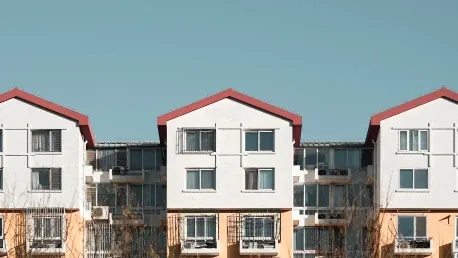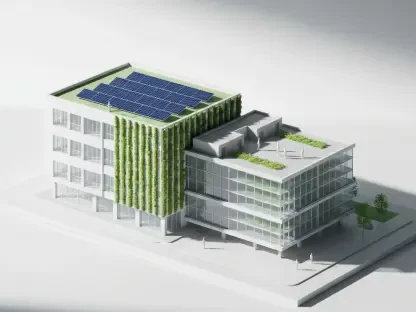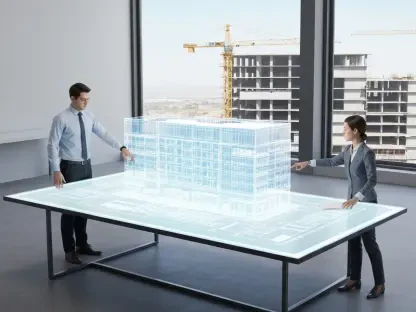Luca Calarailli is an expert in construction with extensive knowledge in design and architecture. Passionate about the intersection of technology and innovation within the industry, Luca offers profound insights into trends and transformations shaping the future of real estate. In this engaging interview, we delve into the burgeoning Build-to-Rent (BTR) sector, its rapid expansion, and the opportunities it presents for investors and developers.
Can you provide a brief overview of the Build-to-Rent (BTR) sector’s growth over the past five years?
The BTR sector has experienced explosive growth over the past five years. From 2019 to 2024, the number of BTR homes in the UK increased by an astounding 173%, with approximately 123,539 completed units. This growth highlights the significant shift in the property investment landscape, as more developers and investors recognize the potential of BTR over traditional Build-to-Sell (BTS) projects.
What factors do you think have contributed to the 173% increase in the number of BTR homes in the UK?
Several key factors have driven this exceptional growth. Firstly, there is an increasing demand for rental properties, driven by shifting cultural attitudes towards homeownership and the flexibility that renting offers. Additionally, the BTR model provides developers with more predictable, long-term income streams, making it particularly attractive for institutional investors. The high standards of building and the attractive amenities that BTR properties offer also contribute to their popularity.
How have investor interests shifted towards BTR compared to Build-to-Sell (BTS)?
Investor interest has pivoted significantly towards BTR, mainly due to the strong yields and stable returns that this model offers. Unlike BTS, which relies on the sale of properties, BTR provides a steady income through rental yields. This consistent revenue stream is particularly appealing in uncertain economic climates.
Why do you think BTR is becoming a more promising area for property investors?
BTR is seen as a promising investment due to its stable, long-term income potential and reduced exposure to market volatility. The ability to maintain occupancy rates through offering appealing amenities and modern living standards also means that investors can maximize their income potential over time.
You mentioned that £5.2 billion was invested in the BTR sector in 2024. What do you believe is driving this record investment?
The record £5.2 billion investment in 2024 is driven by a combination of high demand for rental properties, strong yields, and greater availability of finance tailored specifically for BTR developments. Investors are increasingly drawn to the security and profitability that BTR offers, especially in contrast to the fluctuating sales markets.
Are there any specific reasons 2024 was such a notable year for investment in this sector?
2024’s notable investment can be attributed to the increasing maturity of the BTR market, which reached a level of stability and proof of concept that reassured investors. London, in particular, showcased the high demand and returns available, encouraging expansion into other UK regions.
How does the BTR market differ in London compared to other regions in the UK?
The BTR market in London serves as a benchmark for the rest of the UK. In London, there are approximately 54,352 completed BTR homes, with an annual growth rate of 14.5% as of the last quarter of 2023. This region set the precedent in terms of demand and success, which is now being mirrored in other cities.
What can you tell us about the number of completed BTR homes in London and its annual growth rate?
London has consistently shown strong growth in the BTR sector, with a 14.5% annual increase in completed BTR units. This growth demonstrates the city’s robust demand for rental properties and the confidence investors have in the market.
How does the growth rate of BTR homes in London’s secondary cities, such as Manchester, Newcastle, and Birmingham, compare to that in London?
Interestingly, the growth rate in secondary cities like Manchester, Newcastle, and Birmingham is even higher than in London, at 19.1%. This suggests a burgeoning nationwide demand for BTR homes, with these cities becoming increasingly important hubs for BTR developments.
What role has higher standards of building and fittings played in the popularity of BTR homes?
Higher standards of building and fittings are crucial to the appeal of BTR properties. Modern, high-quality constructions with attractive amenities like gyms, communal areas, and even cinemas make BTR properties highly desirable for tenants seeking convenience and comfort.
Can you elaborate on some of the amenities and perks that attract tenants to BTR properties?
BTR properties often include amenities that enhance lifestyle and community living—gyms, communal lounges, workspaces, and dining areas. These facilities not only add value but also foster a sense of community among tenants, which is a significant draw for many renters.
How do longer tenancy periods impact both tenants and investors in the BTR market?
Longer tenancy periods provide stability for both tenants and investors. Tenants benefit from the security of tenure and the ability to establish a more permanent home without the fear of frequent relocations. For investors, longer tenancies ensure more consistent rental income and reduced turnover costs.
What do you mean by a “clean exit” in the context of BTR investments?
A “clean exit” in BTR investments refers to the ease with which developers and investors can exit the market, typically through the sale of their stake in the development to another investor. This process is made simpler by the predictable income and established operational efficiencies of BTR properties.
How do you see the future of the BTR market evolving over the next few years?
The BTR market is poised for continued growth. There will likely be an increase in investment, expansion into new regions, and further innovation in the types of amenities and services offered. We may also see more sustainable and technology-driven developments as the sector evolves.
Can you explain the financial advantages that BTR presents to developers over BTS?
BTR offers financial advantages such as predictable and steady income streams, higher occupancy rates, and enhanced asset value over time. These benefits are contrasted with the one-off capital returns from property sales in BTS models, making BTR more appealing for long-term investments.
How does the availability of finance differ between BTR and BTS developments?
The availability of finance is generally more favorable for BTR developments due to the steady rental income they generate. Banks and other financial institutions are often more willing to lend to BTR projects, recognizing the reduced risk and reliable returns compared to BTS developments.
What advice would you give to developers who are considering transitioning from BTS to BTR?
For developers transitioning from BTS to BTR, it’s crucial to focus on understanding the rental market demands and tenant expectations. Investing in high-quality build and fittings, and offering desirable amenities will be key. Establishing strong property management practices will also ensure tenant satisfaction and retention, crucial for long-term success.
Finally, are there any potential challenges or risks you foresee in the BTR sector’s continued growth?
Potential challenges include market saturation in certain regions, rising construction costs, and regulatory changes. Moreover, maintaining high occupancy rates and managing tenant expectations will be ongoing priorities. Developers will need to stay adaptive and responsive to these and other emerging trends to sustain growth in the BTR sector.









